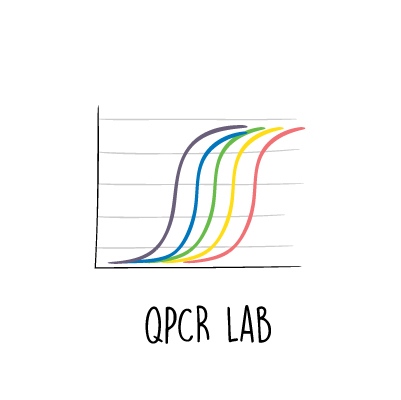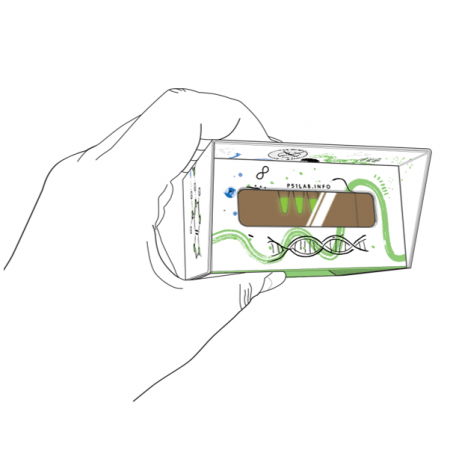
- 转铁蛋白和apotranferrins
- Lab Reagents: Smart Buffers and Reagents
- 分子生物学用酶:分子生物学用酶
- 蛋白质纯化:阿波罗20毫升超滤
- 免疫球蛋白
- qPCR:基因分析和基因面板
- PCR : PCR Products
- 牛奶和血小板蛋白
- DNA & RNA Sequencing : Dye Terminator clean-up
- Aptamers: Catalogue Aptamers
- Peptide Synthesis : Amino Acids
- 运输和其他蛋白质
- DNA: Whole DNA
- STEM学习:STEM工具包
- 低内毒素水平蛋白质
- 提取和纯化-RNA:组织/培养
- 转染-EZ生物系统:细胞系
- 凝血因子
- 分析试剂盒
- 抗体
- Gel Electrophoresis: Gel Electrophoresis

STEM Learning: STEM Kits
A range of easy to use kits for PCR, gel electrophoresis and other molecular biology techniques especially designed for budding school students, in schools, 6th form colleges and other educational institutes.
P51™ qPCR Lab- Principles of Quantitative PCR
Explore qPCR using your existing PCR machine! Directly visualize DNA amplification and calculate relative concentrations of DNA template.
MiniPCR - Amplyus
| Catalogue No. | Description | Pack Size | Price | Qty |
|
|---|---|---|---|---|---|
| KT-1900-05 | P51™ qPCR Lab: Principles of Quantitative PCR | Kit | POA | Quantity | Add to Order |
Related products
P51™ qPCR Lab- Principles of Quantitative PCR
Explore qPCR using your existing PCR machine! Directly visualize DNA amplification and calculate relative concentrations of DNA template.
MiniPCR - Amplyus

P51™ qPCR Lab: Principles of Quantitative PCR
Perform quantitative polymerase chain reaction (qPCR) in a directly observable format and understand molecular diagnostics. qPCR monitors the a#scent dyes or probes, and it is the gold standard for the detection of viral infections including COVID-19. In this lab, students use low-cost equipment to observe the change in fluorescence first hand, without the need for a qPCR machine. Students directly follow the increases in fluorescence that accompany PCR cycles, understanding how exponential DNA amplification works. They then use their measurements to quantify nucleic acids. This lab grounds students in the principles and practice of qPCR, the gold standard technique in the molecular diagnosis of infections including SARS-CoV-2. An optional extension allows students to compare results of real-time qPCR and end-point PCR using gel electrophoresis.
- Techniques: Micropipetting, fluorescence detection, quantitative PCR.

- Topics: Gene expression, fluorescence, biotechnology
- Time required: 120 minutes; can be split over 2 or 3 class periods
- Level: Advanced high school through college

What is included
The P51™ qPCR Lab kit contains reagents for 8 lab groups:
- 2X qGRN Master Mix
- qPCR Lab Primer Mix
- DNA Sample
- Nuclease-Free Water
- 100 bp DNA Ladder, Load Ready™
- 8-tube PCR strips
- 6X DNA Loading Dye
*Note: Reagents are compatible with P51™ Molecular Fluorescence Viewer or other blue light transilluminator (460-480 nm, e.g. blueBox™ or blueGel™).
Required equipment (one per lab group):
- Micropipettes and tips
- Thermal cycler
- P51™ Molecular Fluorescence Viewer or other blue light transilluminator (460-480 nm, e.g. blueBox or blueGel).
Optional extension requirements (end-point gel electrophoresis):
- Learning Lab Companion Kit (catalog no. KT-1510-01)
- Gel electrophoresis and visualization system
Storage notes:
- Reagents require freezer storage
- Reagents are stable for 12 months when stored in the freezer
If you cannot find the answer to your problem below then please contact us or telephone 01954 210 200
P51™ qPCR Lab- Principles of Quantitative PCR
Explore qPCR using your existing PCR machine! Directly visualize DNA amplification and calculate relative concentrations of DNA template.
MiniPCR - Amplyus
SDS – 2X qGRN Master Mix
SDS – 100 bp DNA Ladder
SDS – DNA Samples
SDS – Primer Mix
If you cannot find the answer to your problem below then please contact us or telephone 01954 210 200




